Wood Bowl
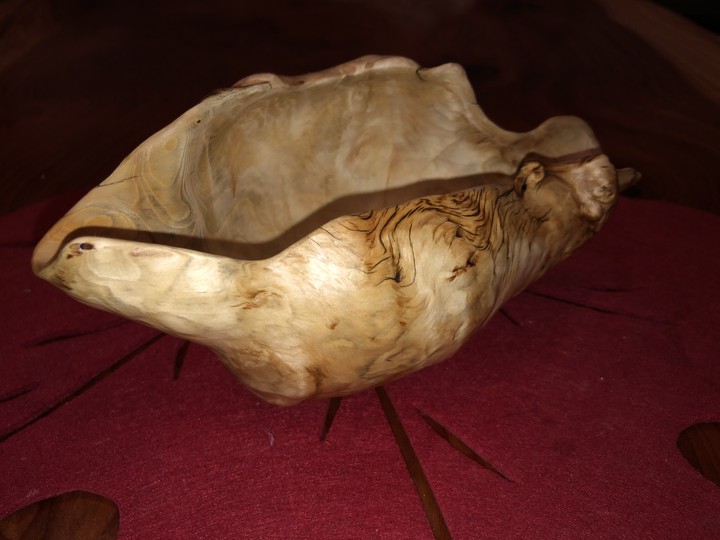
This is my seventh wood bowl!
Table of Contents
Overview
- Start: Mar 6, 2021
- End: Mar 14, 2021
- Wood Species: Jack Pine
The burl for this bowl was collected at the same time and general location as the burl for a separate bowl project while in Minnesota. It was extracted and completed in the same manner as that burl/bowl.
Bark Removal
My first step was to remove the bark from the burl. Because I allowed the burl to dry with the bark attached, removing the bark was difficult. I initially used a hammer and wood chisel until I had removed the hardest bark.
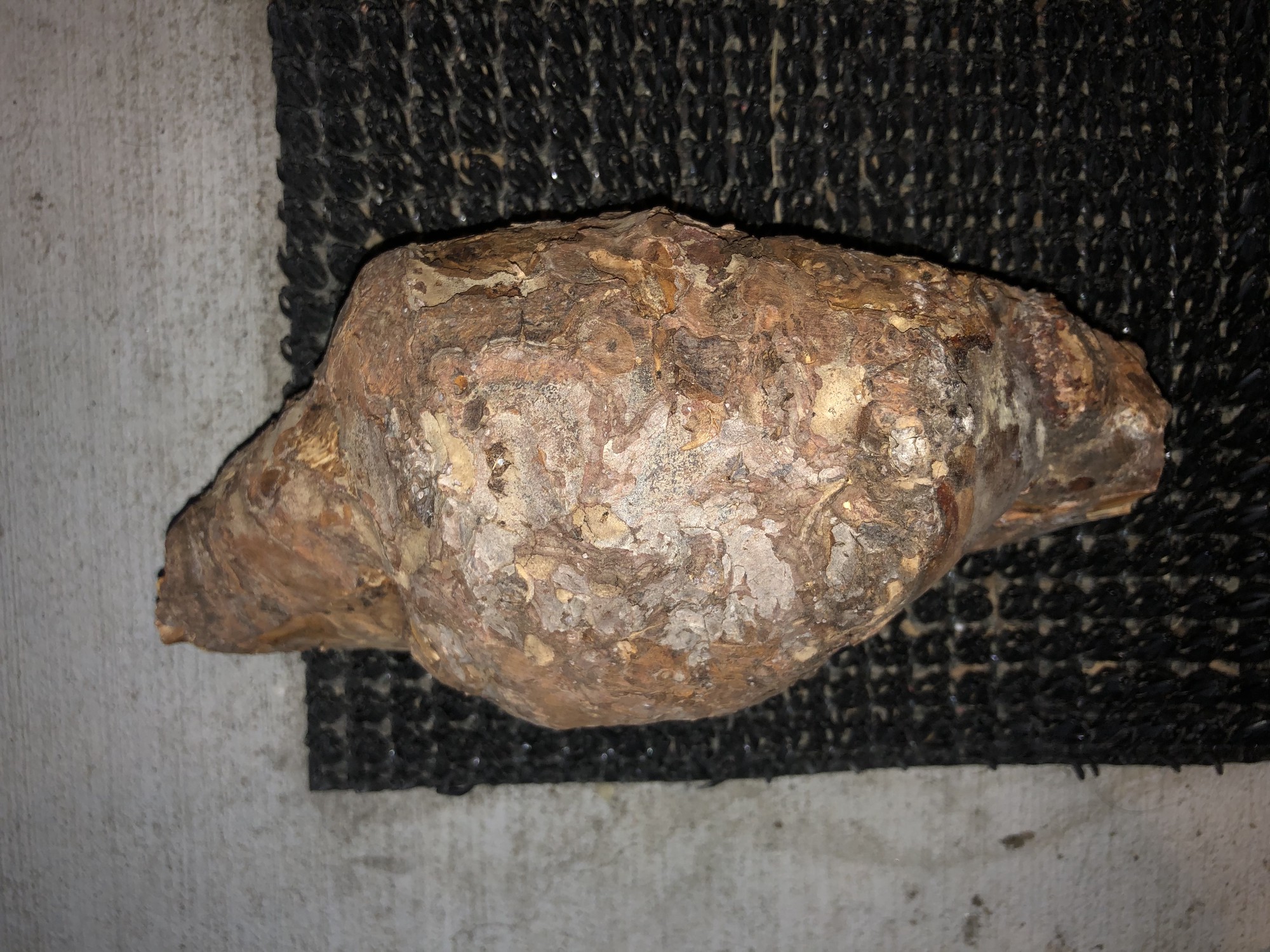
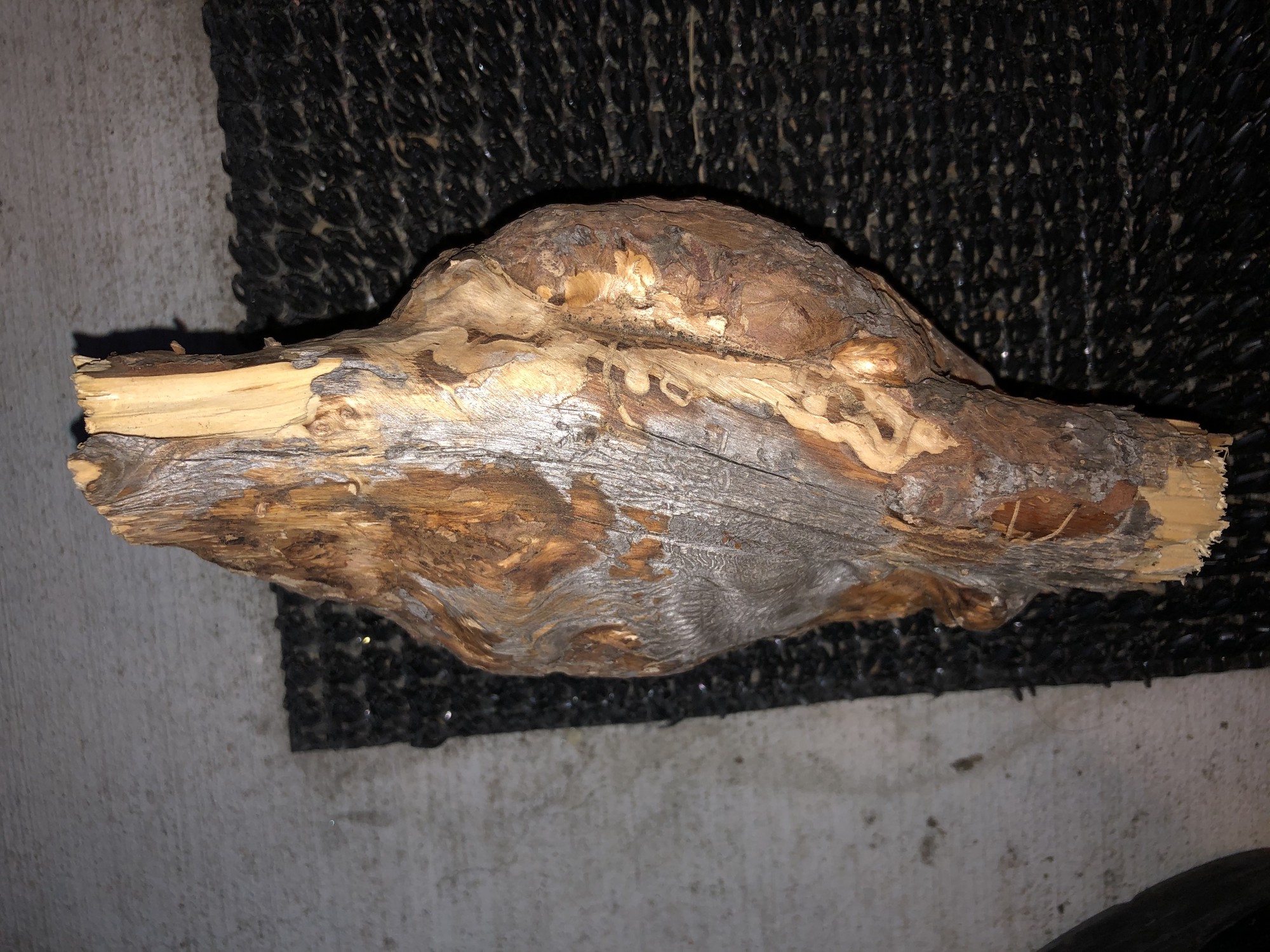
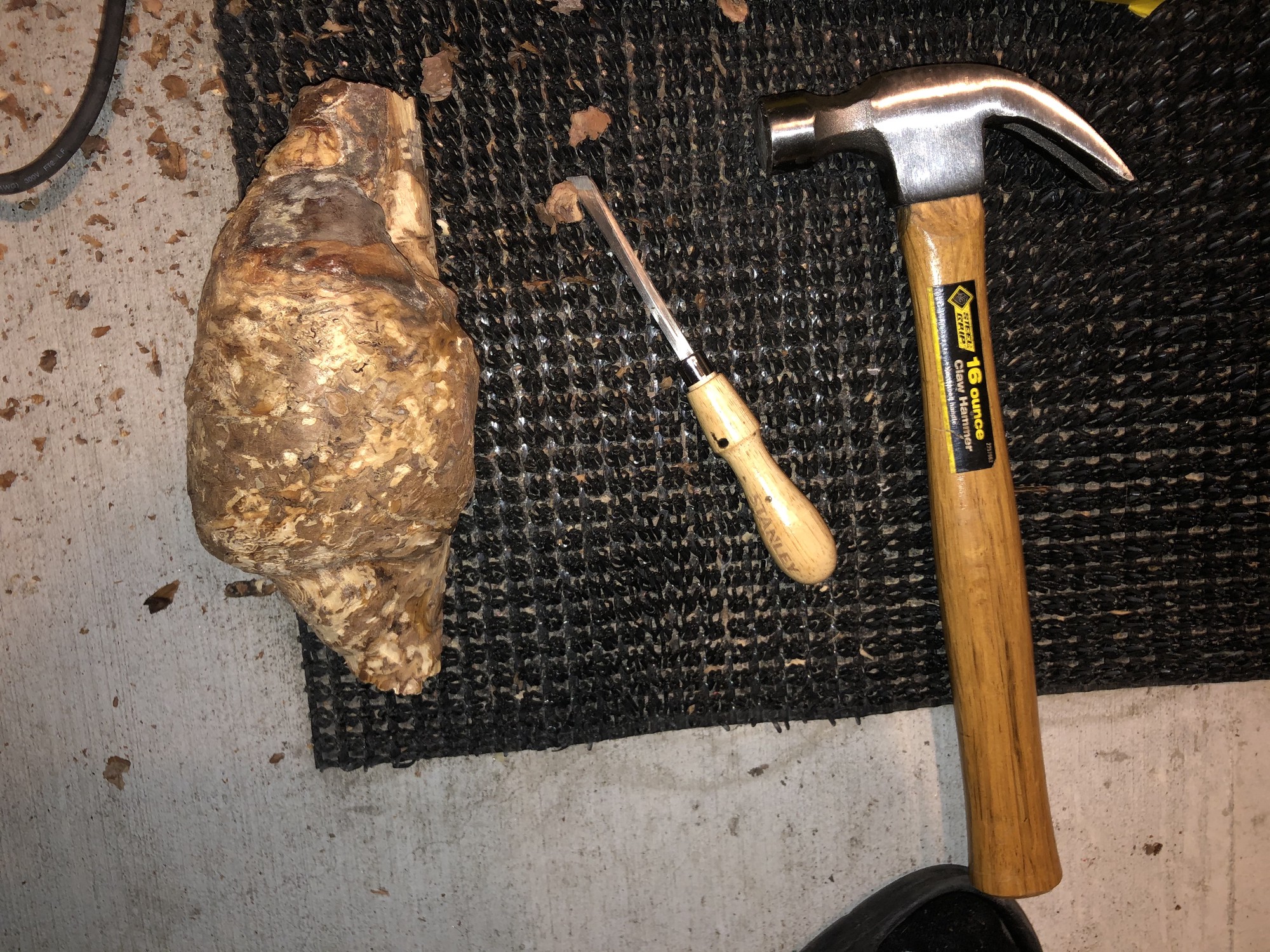
I then used a drill and red and orange nylon drill brushes1 2 to remove the remaining bark. The brush was soft enough to not damage the underlying wood.
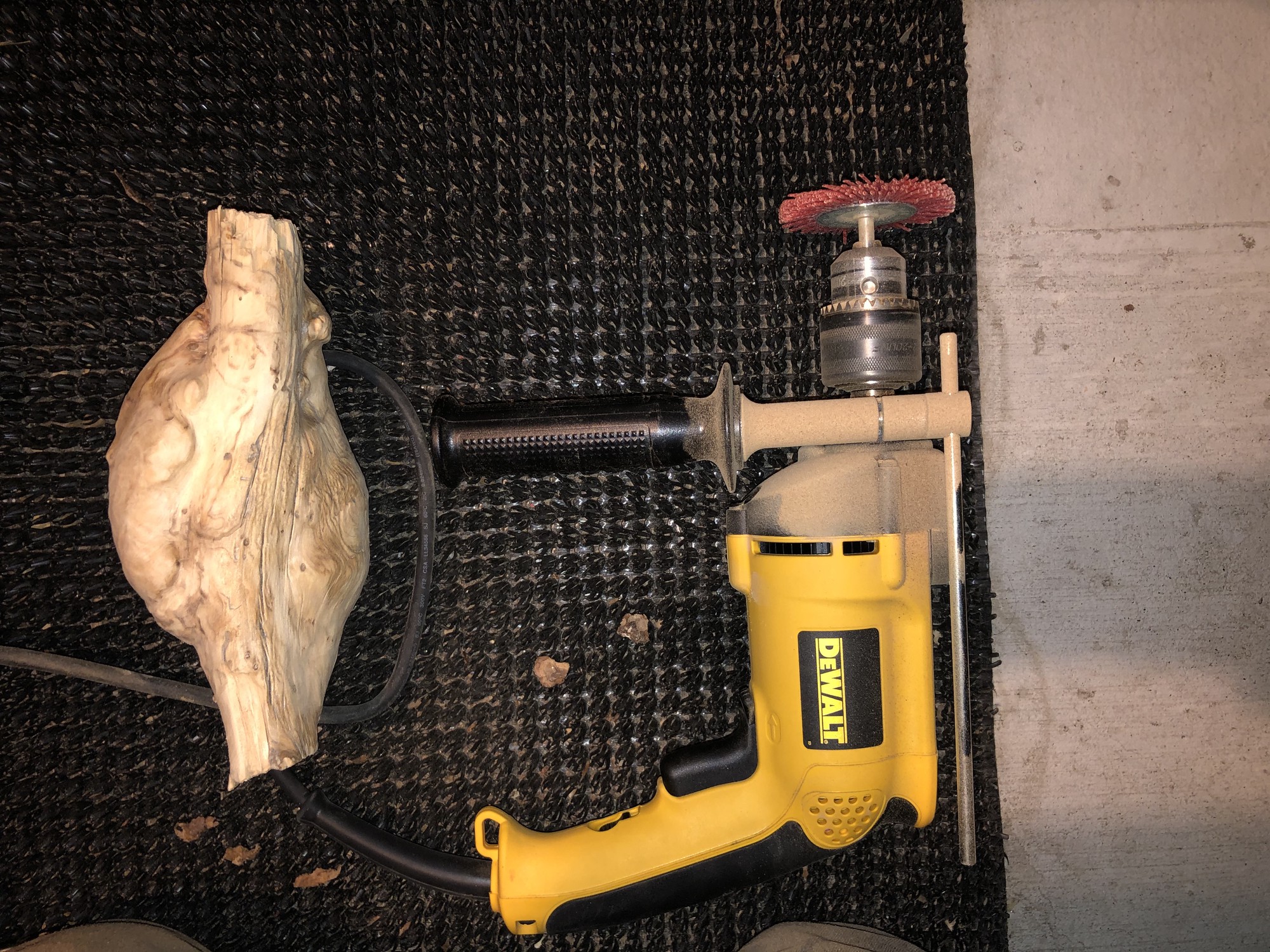
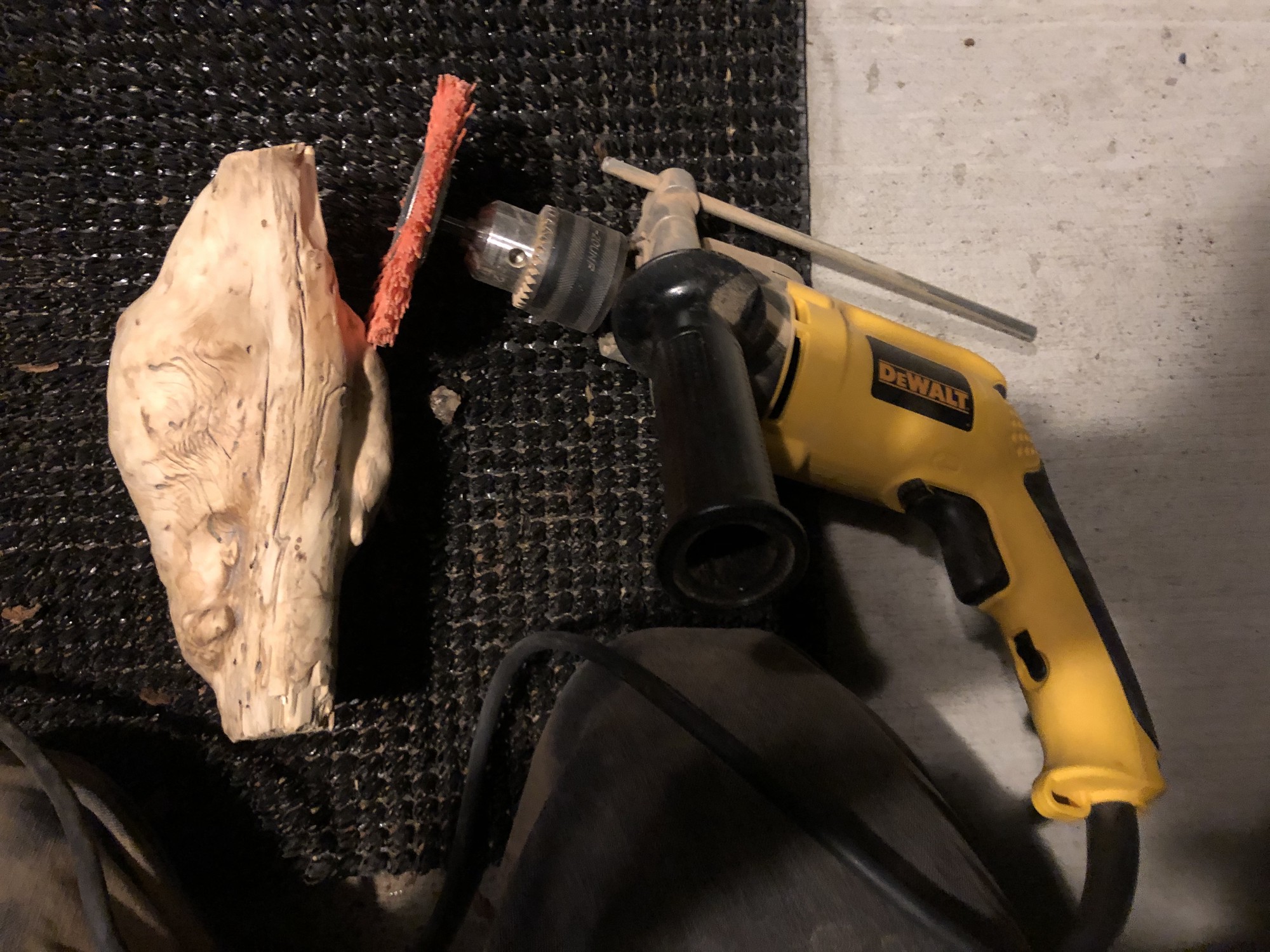
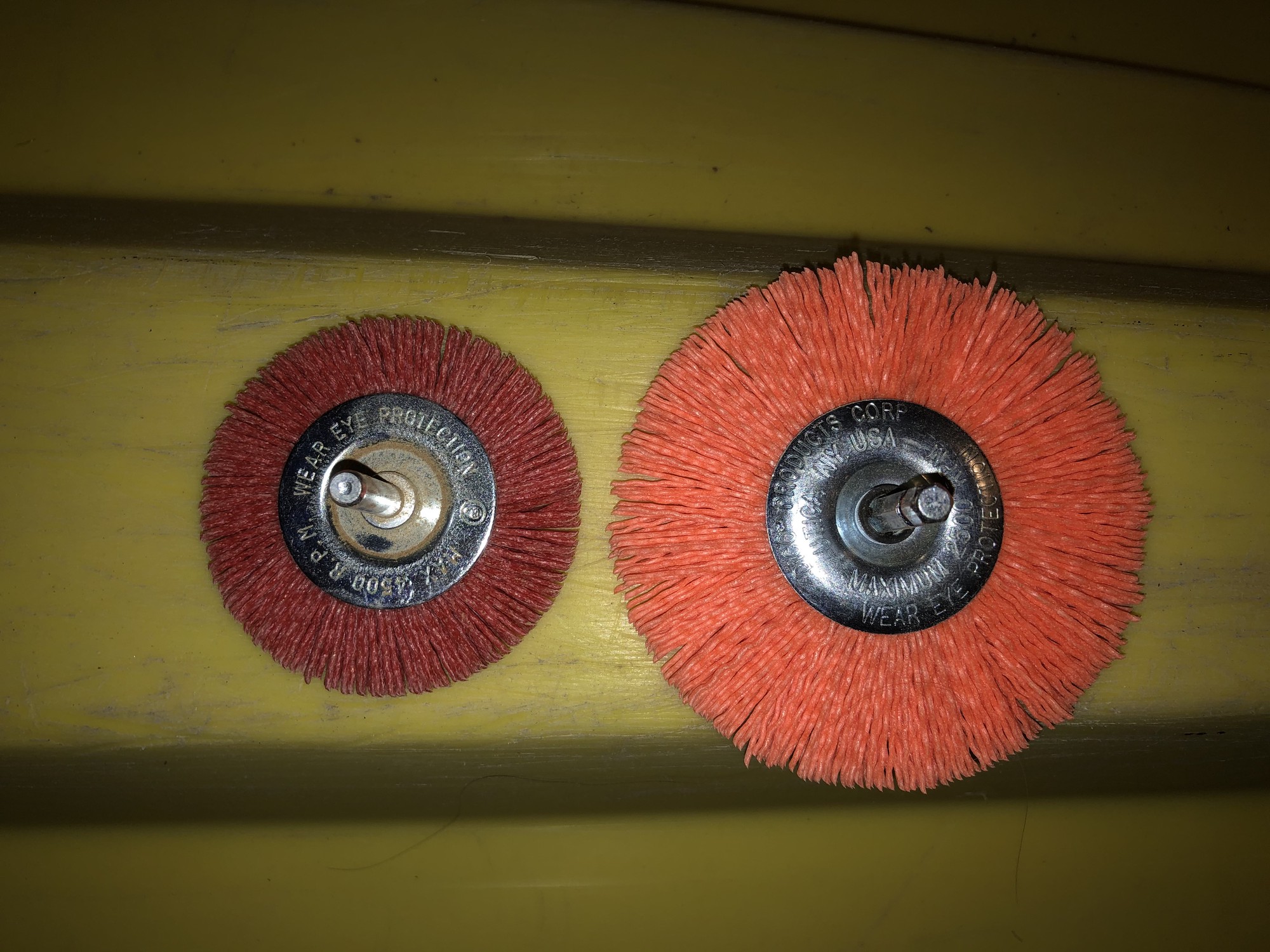
Carving
Next, I needed to find a way to safely and accurately hollow the bowl.
Precise control here was critical because penetrating through the bowl edge was a non-starter.
I used a dremel with diamond wheel from Home Depot3 to progressively refine the thickness of the bowl.
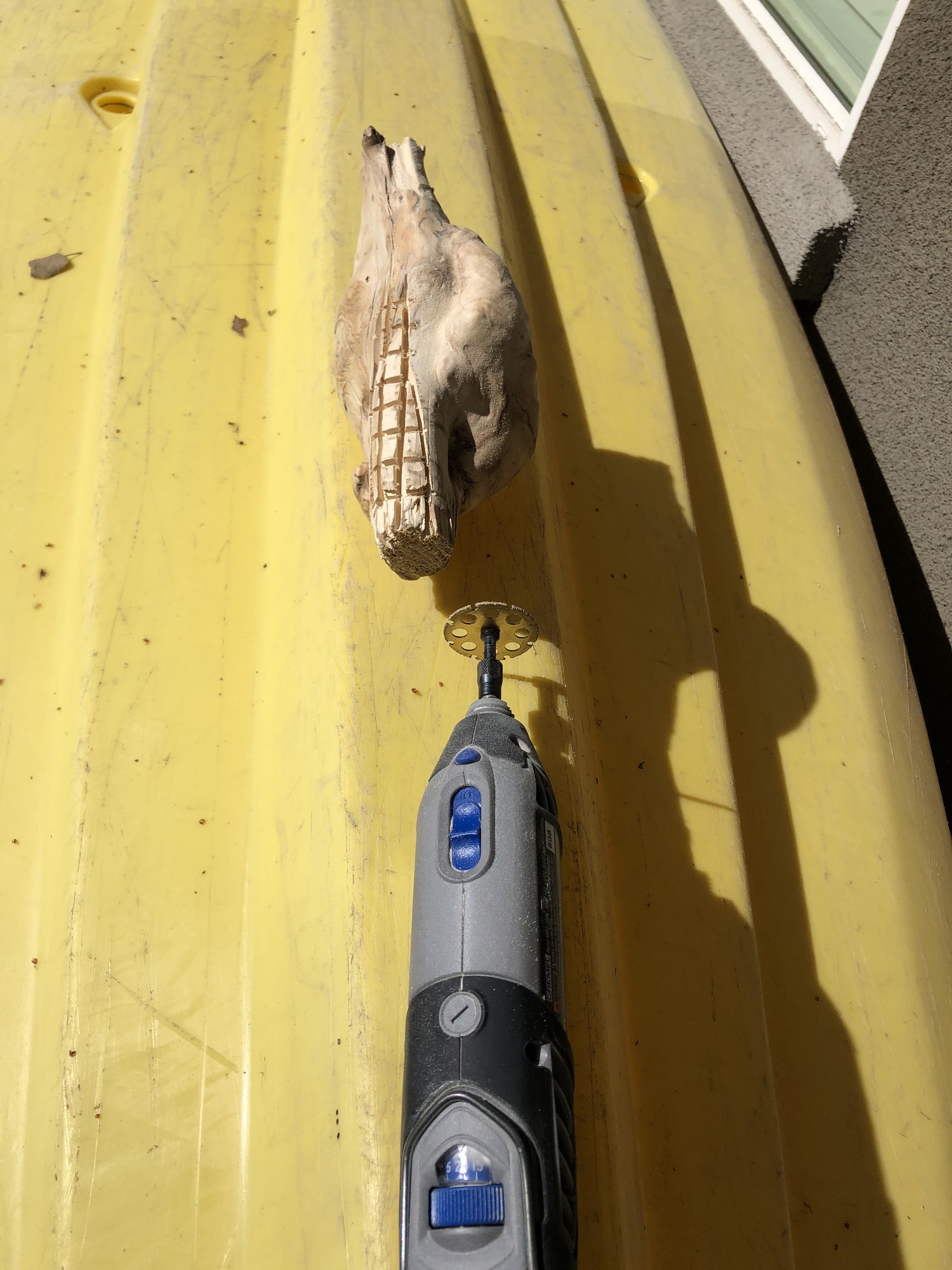
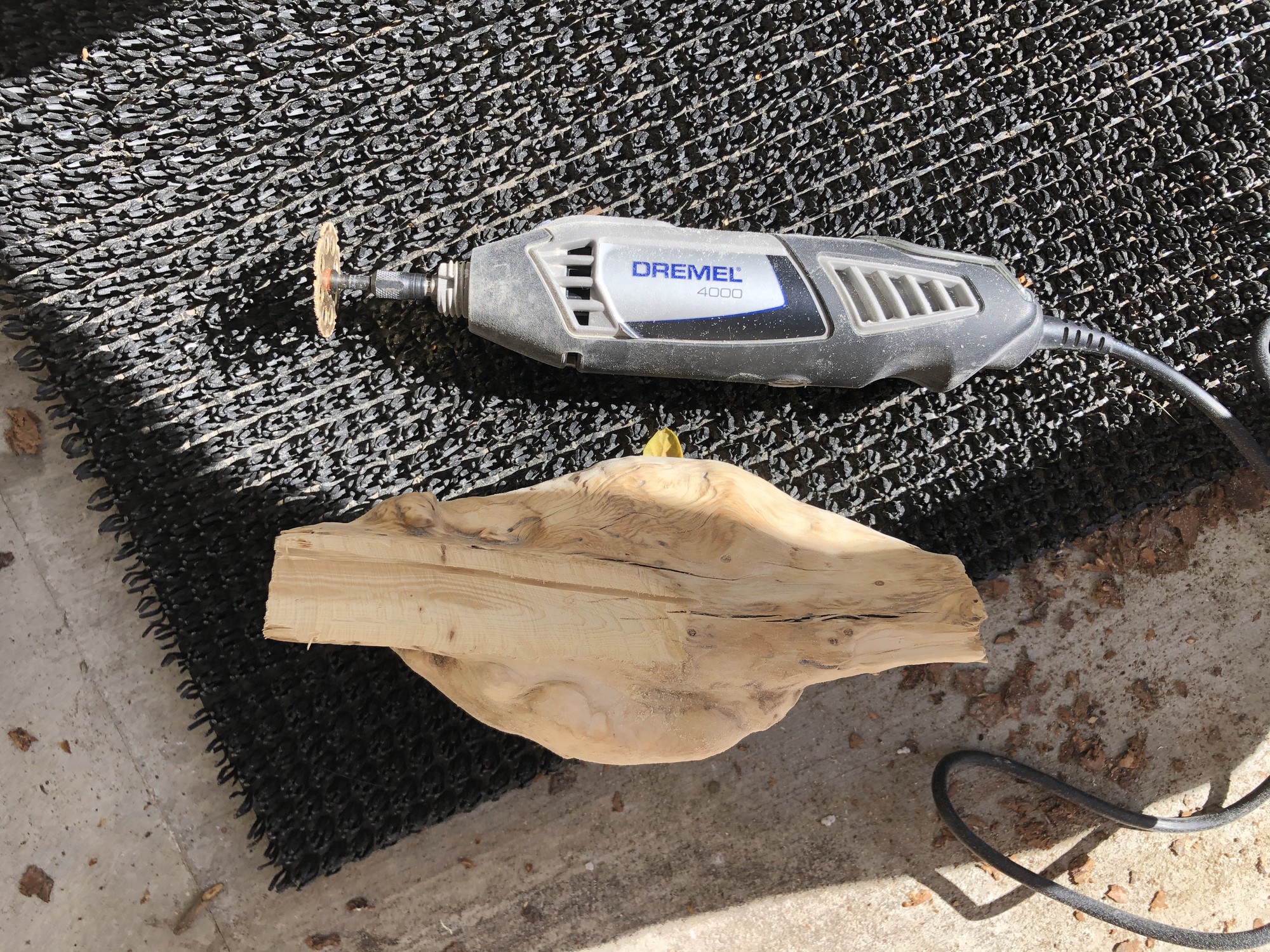
I then used the Orbicut 40 bit4 to hollow the bowl.
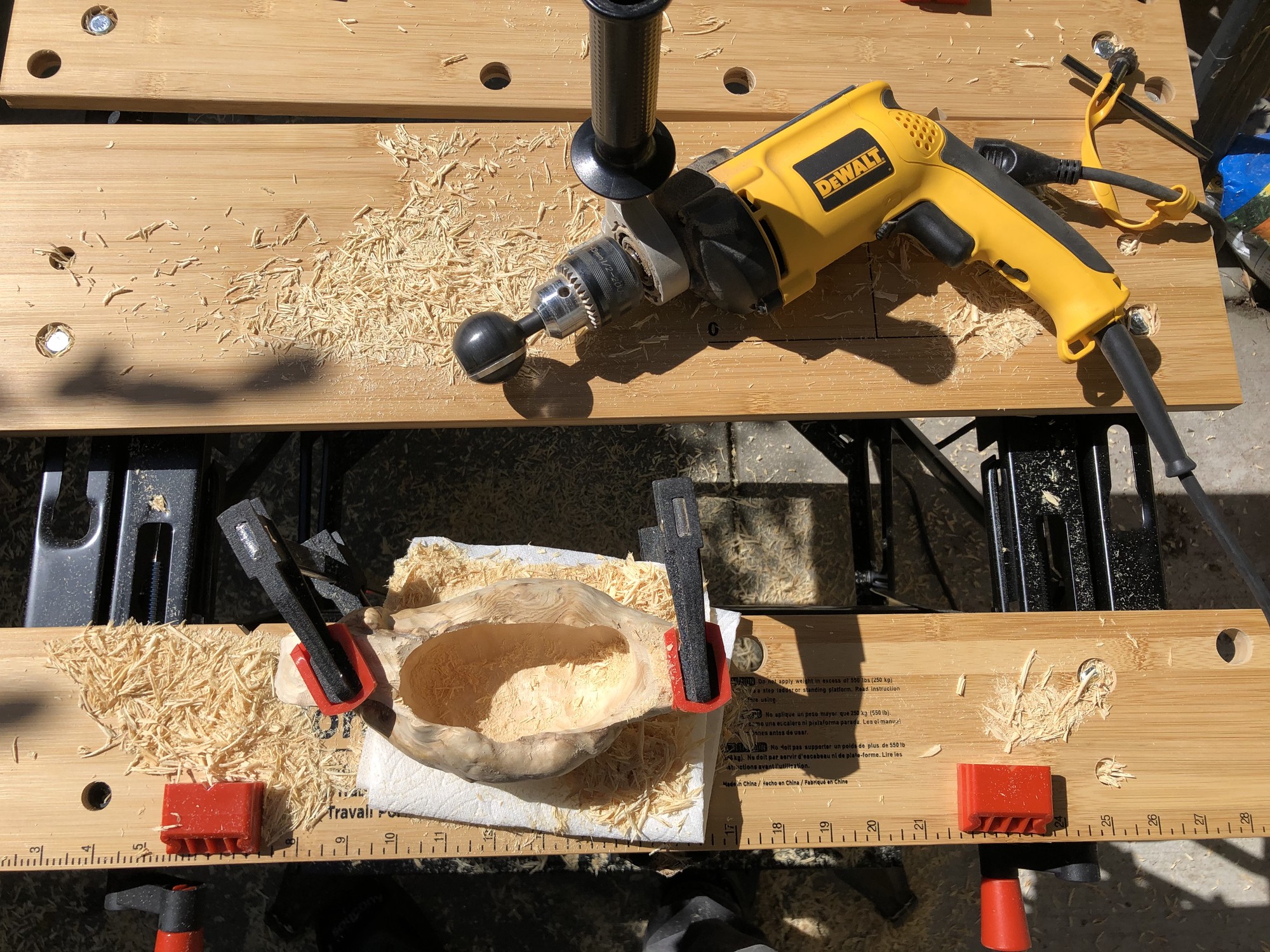
I further refined the hollowing with a dremel and drum sander5.
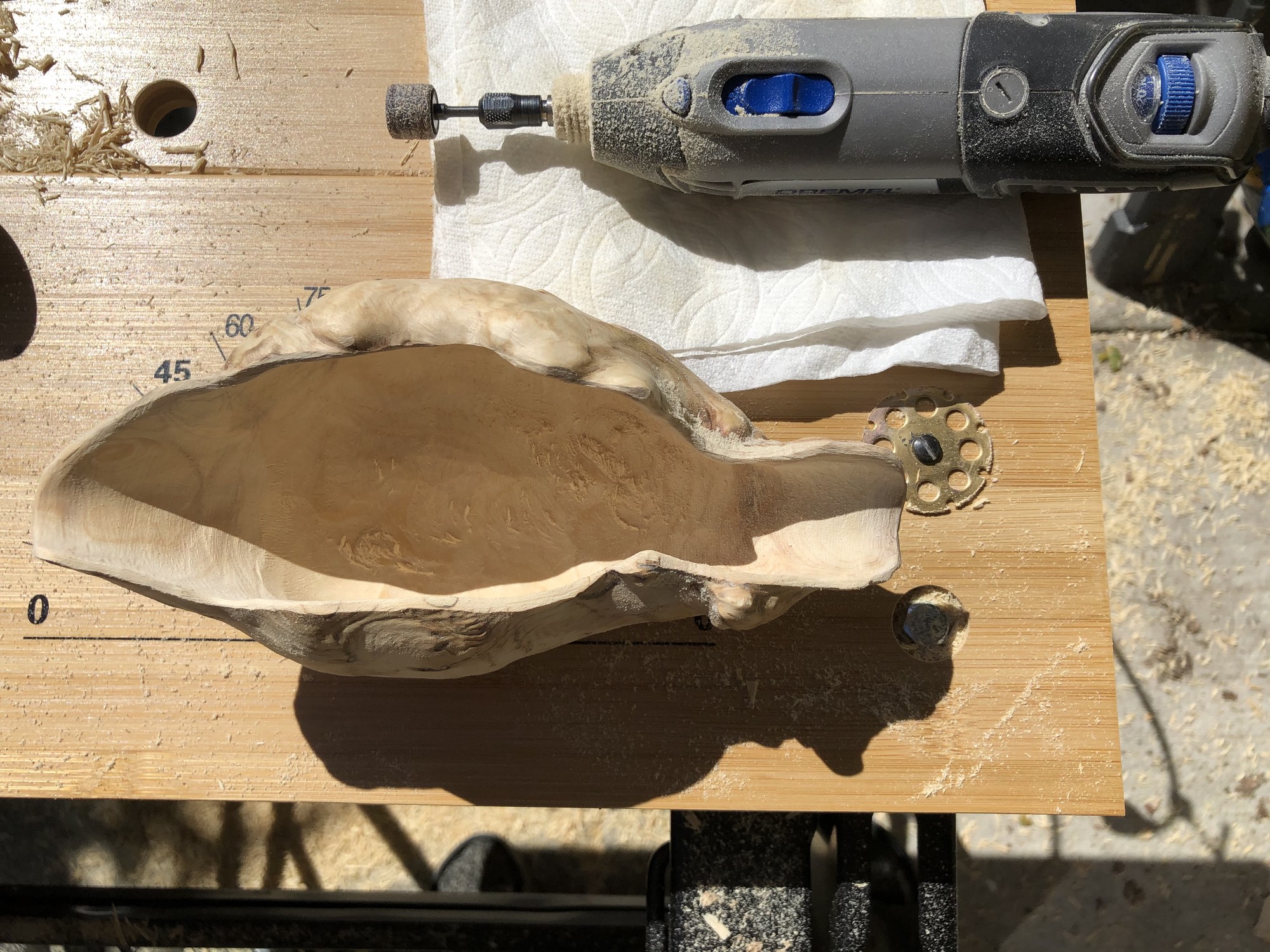
1st Pass Sanding
Next, I moved on to sanding the burl using wet/dry 150 grit sandpaper (to even out the divots formed from the Orbicut 40’s spherical shape), a dremel and several polishing wheels6.
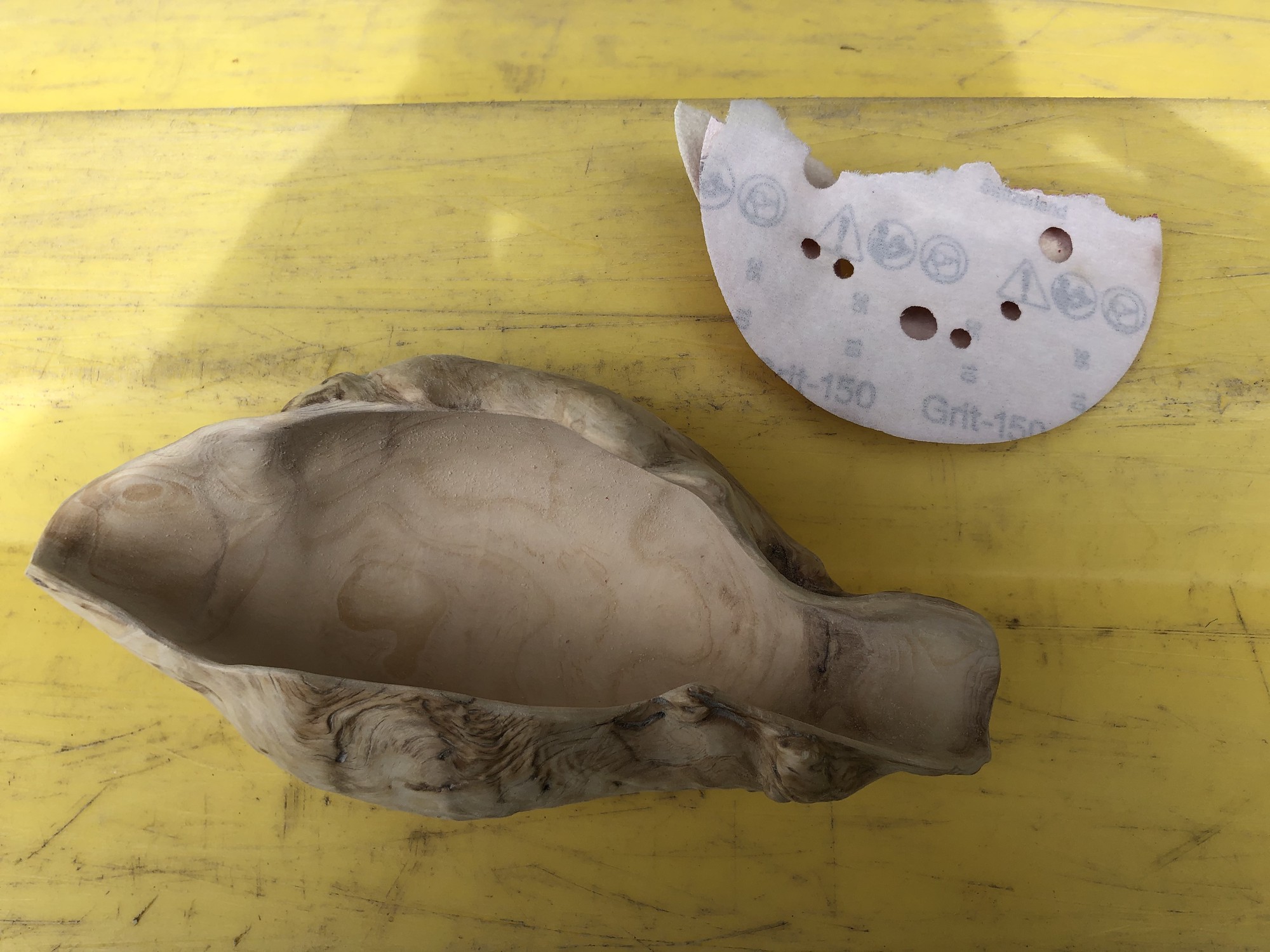
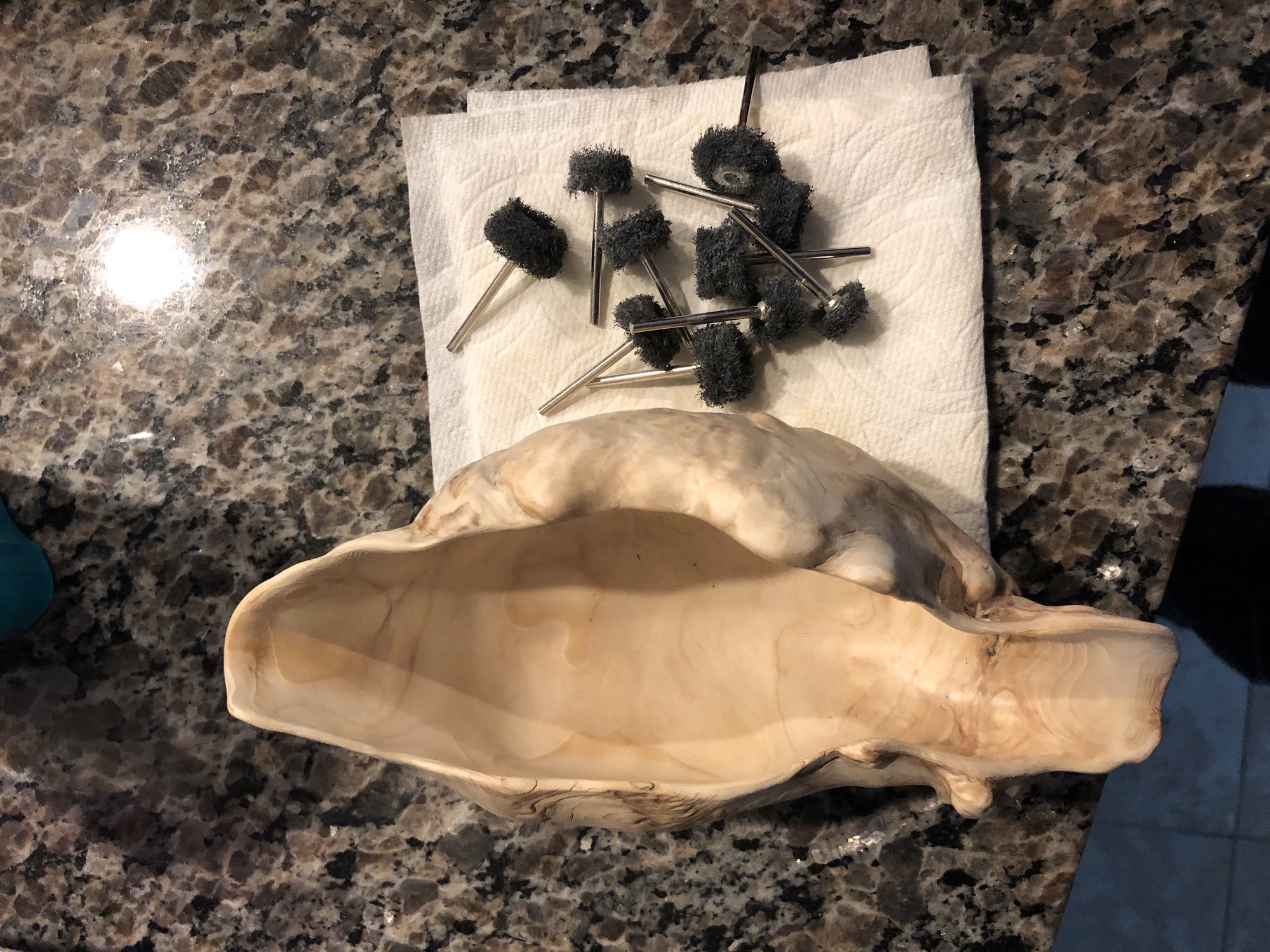
Wipe Down
Before applying the finish coats of oil, I wiped-off as much of the residual sawdust from the burl as possible using a lightly dampened, paper towel.
Finish Coats
The last step was to apply finish to stain and protect the bowl as well as to enhance the chatoyancy of the bowl. For this I used Walnut colored Rubio Monocoat7 following the instructions on the back of the can. This finish is highly respected in the woodworking community as it is in-grain, requires just one application that takes about 15 minutes to apply and once dried (after ~5 days), is food-safe.
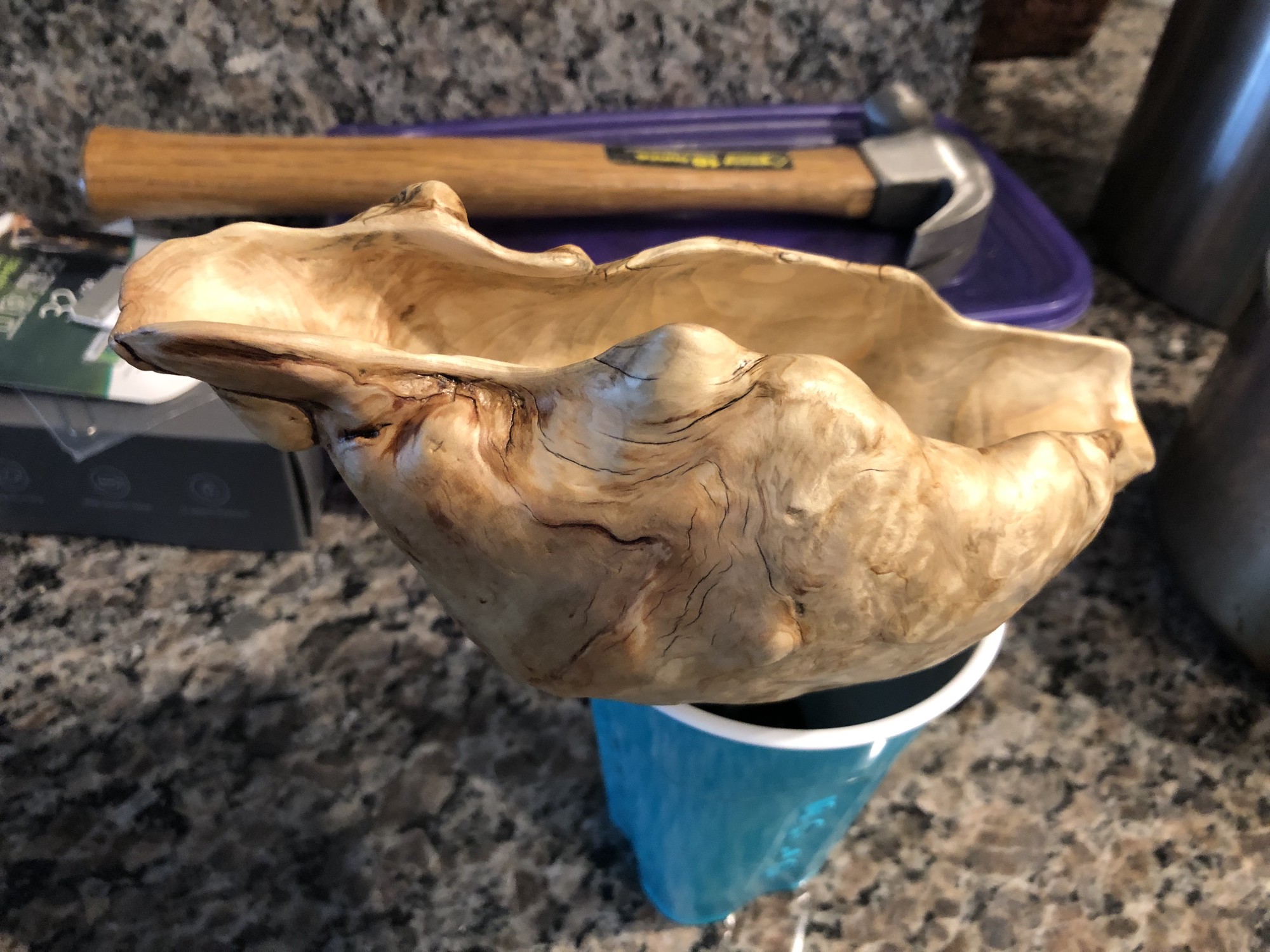
Finished Bowl
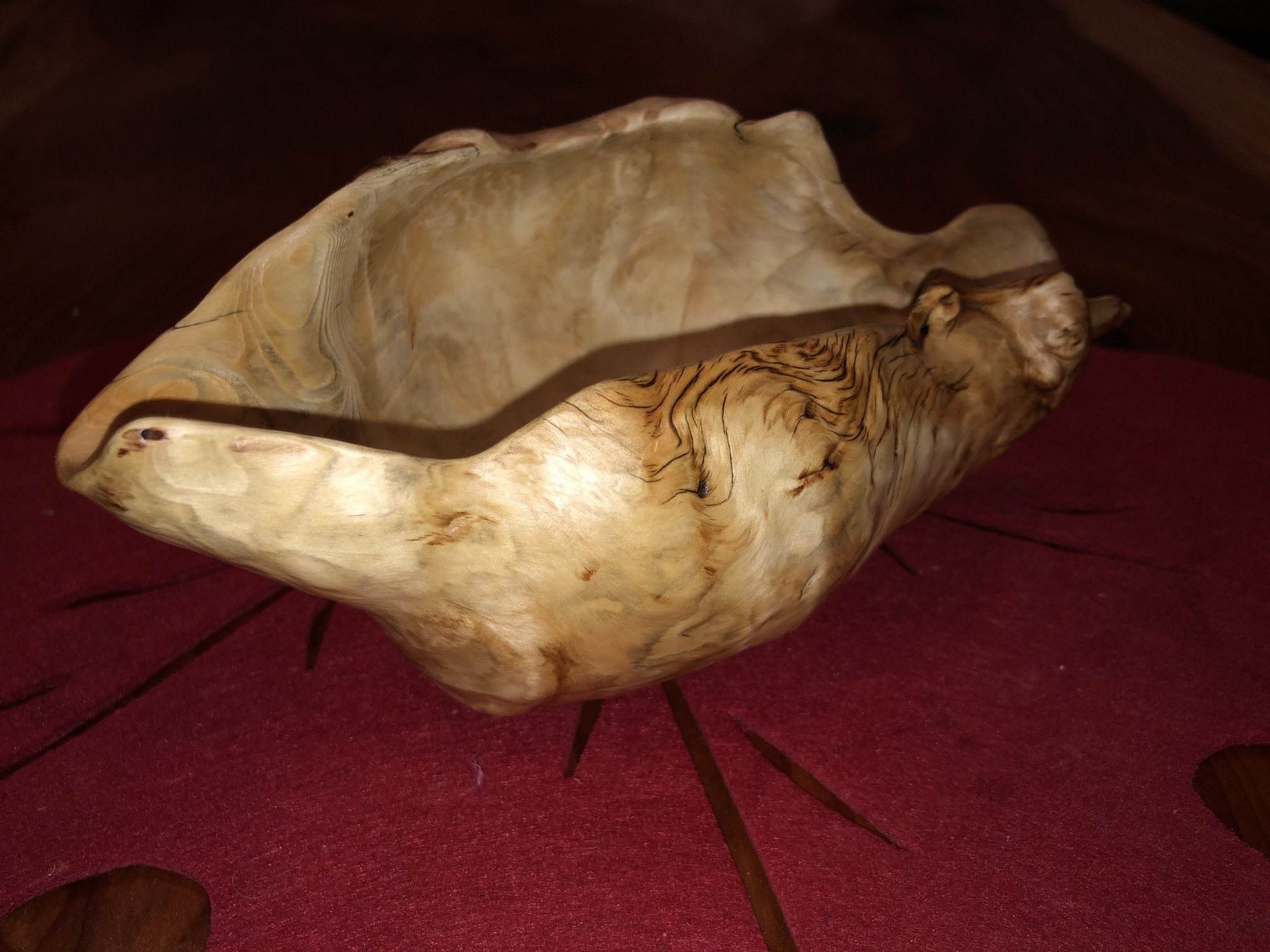
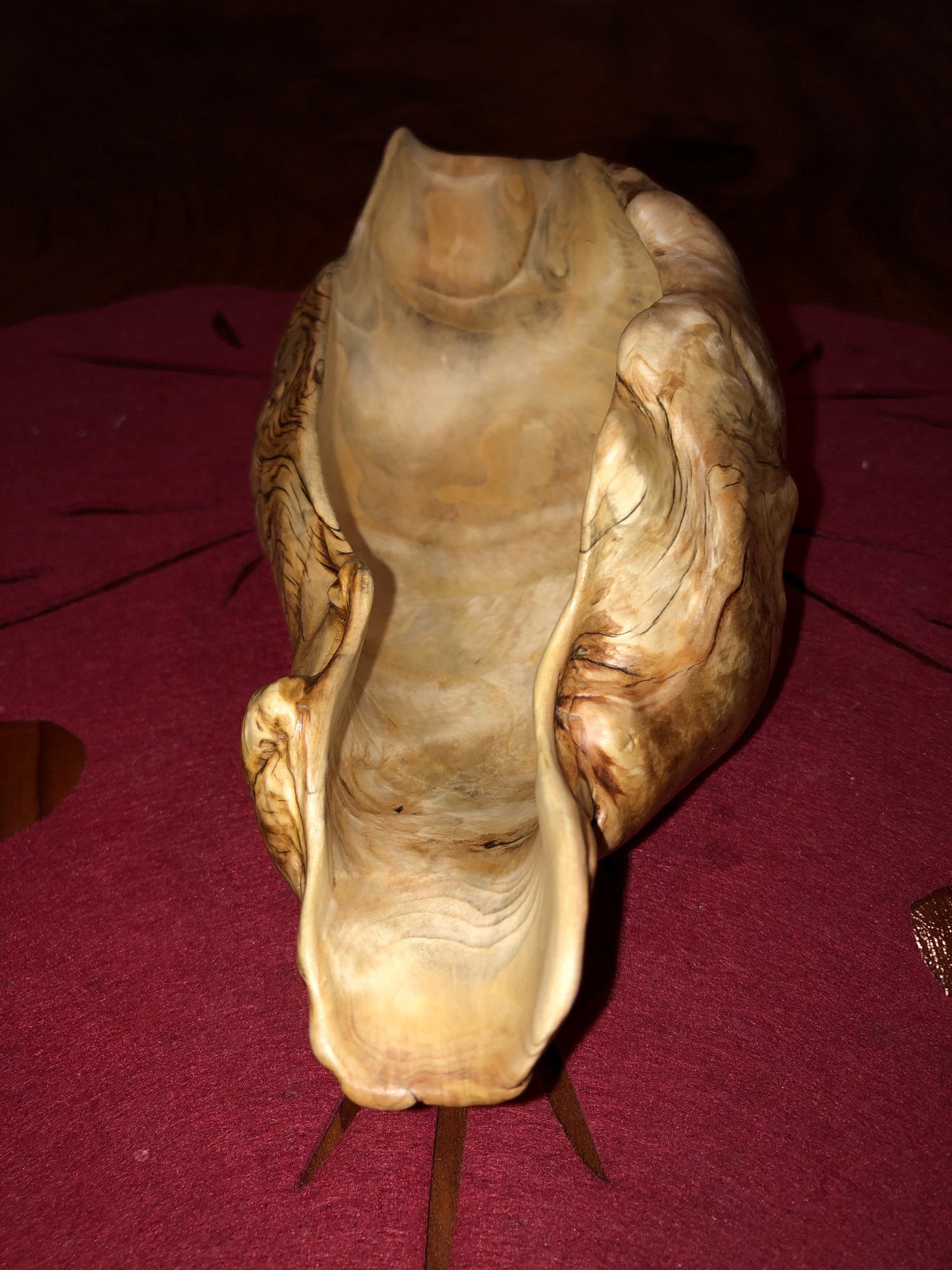
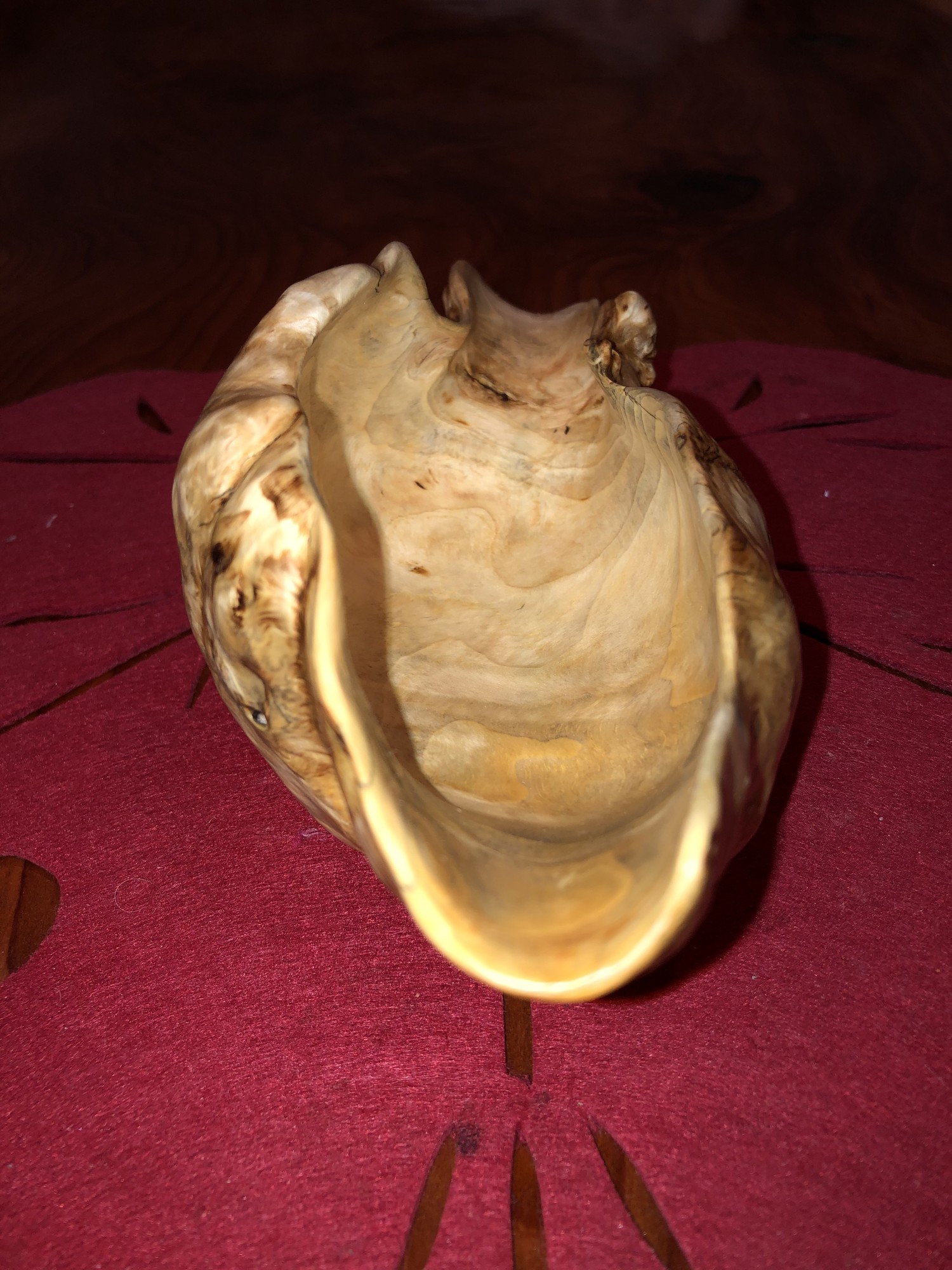
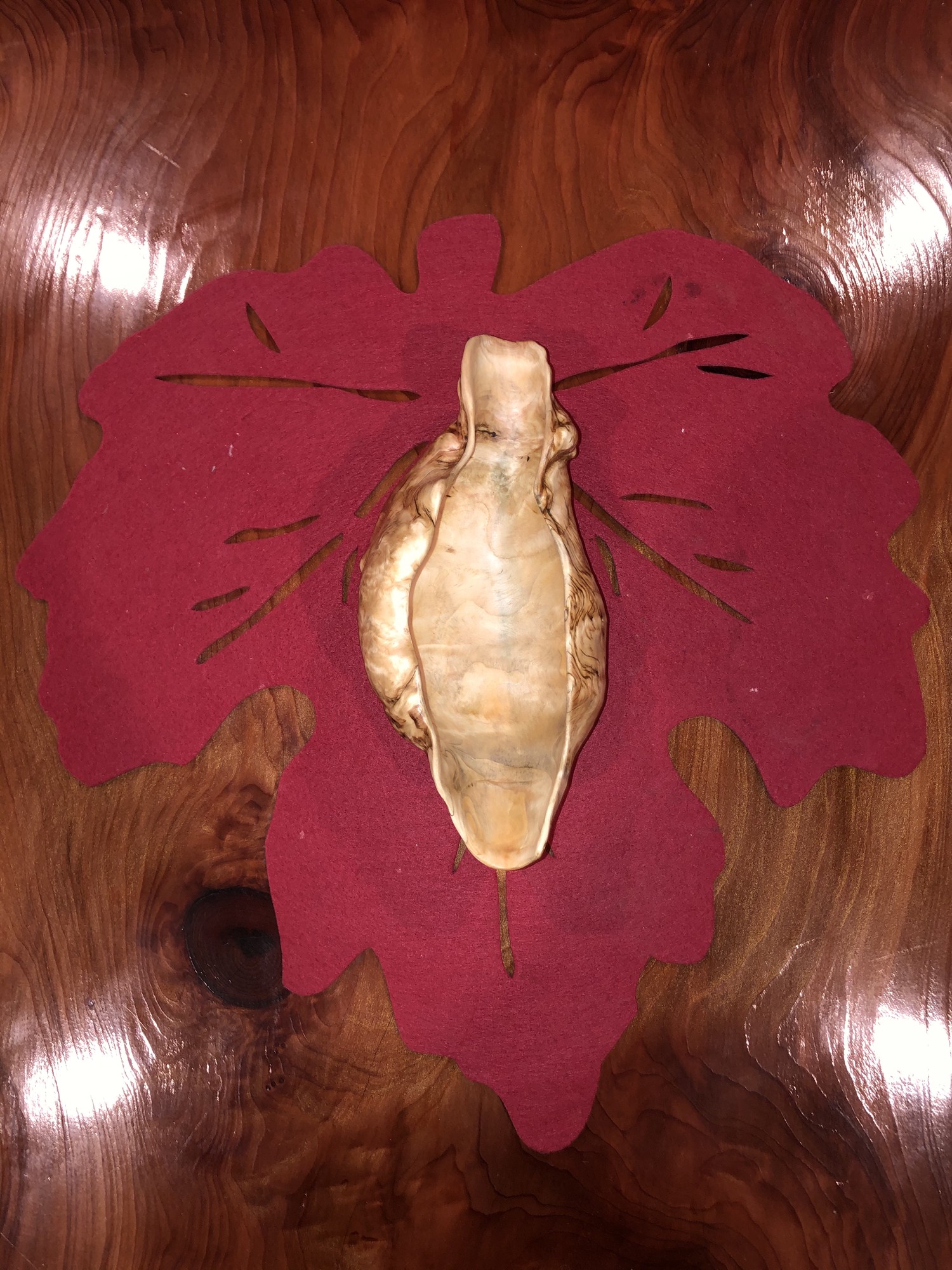
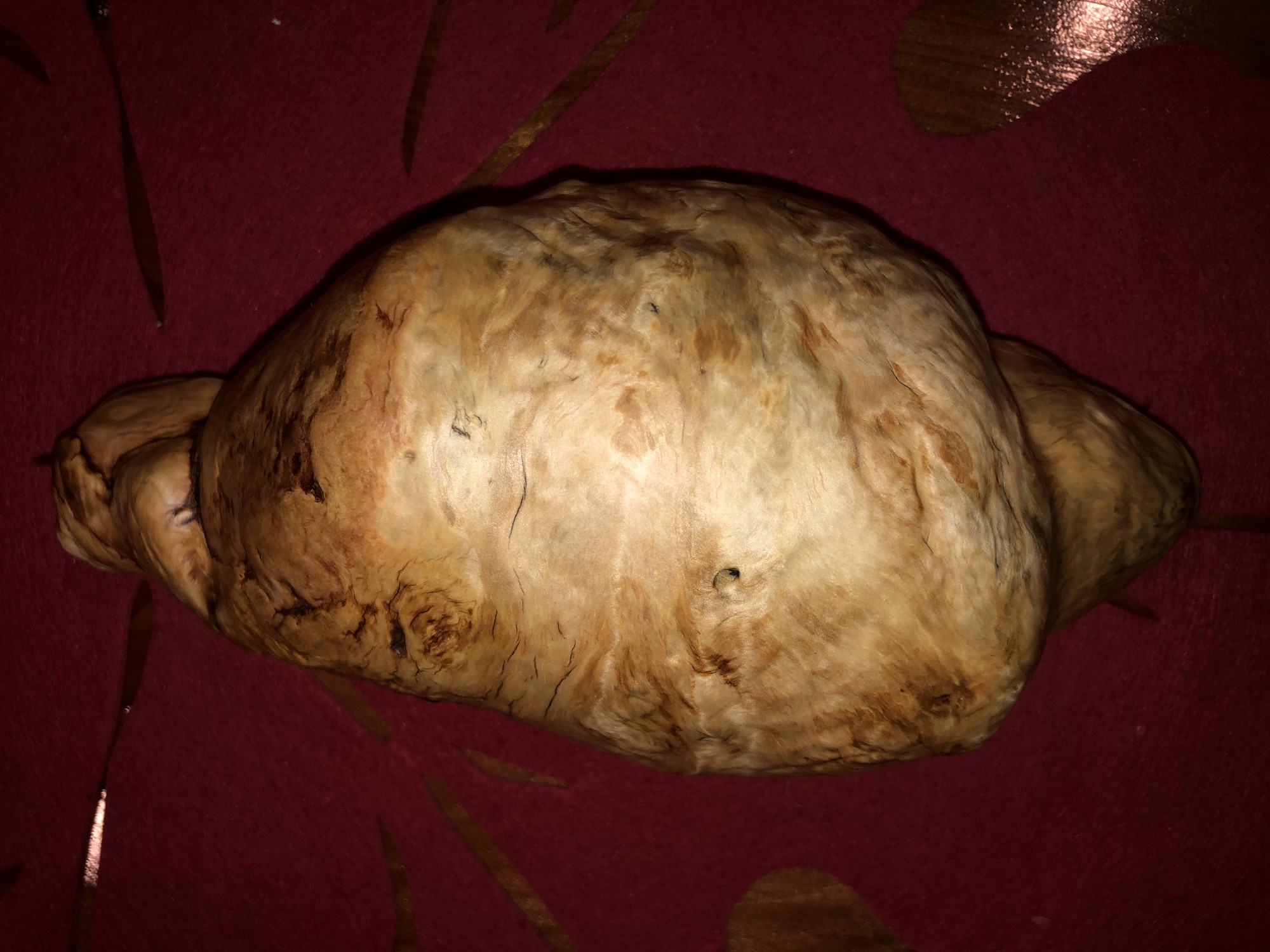
Cheers!
-
https://www.amazon.com/Nylon-Abrasive-Wheel-Brush-Shank/dp/B07QDRCBBT ↩︎
-
https://www.amazon.com/Dico-7200048-Medium-Nyalox-Wheel/dp/B002YDJU98/ref=psdc_2665581011_t1_B011ICDVJA?th=1 ↩︎
-
https://www.homedepot.com/p/Dremel-7-8-in-Rotary-Tool-Diamond-Wheel-for-Marble-Concrete-Brick-Porcelain-Ceramics-and-Epoxies-545/100346850 ↩︎
-
https://www.amazon.com/OrbiCut-Speed-Cutting-Tool-Plano/dp/B01N5YGI35 ↩︎
-
https://www.amazon.com/Dremel-407-Drum-Sander/dp/B00004UDGV/ref=sr_1_6?dchild=1&keywords=dremel+sanding+drum&qid=1588277399&sr=8-6 ↩︎
-
https://www.amazon.com/gp/product/B075C72PGK/ref=ppx_yo_dt_b_asin_title_o00_s00?ie=UTF8&psc=1 ↩︎